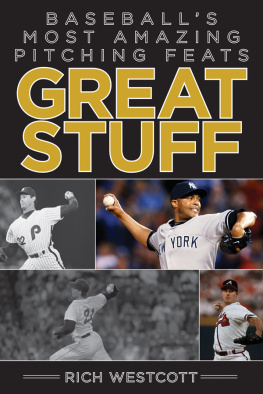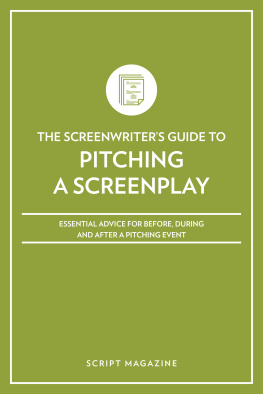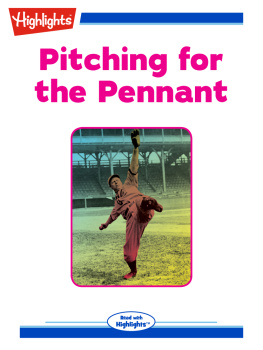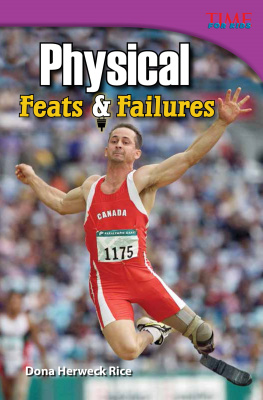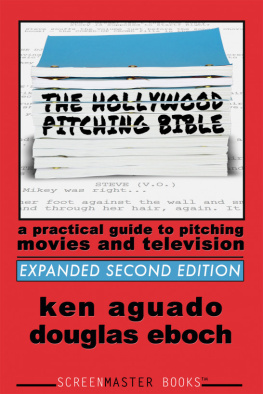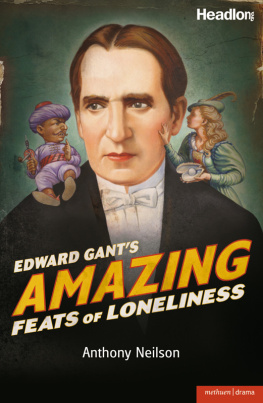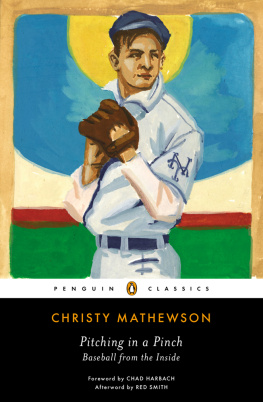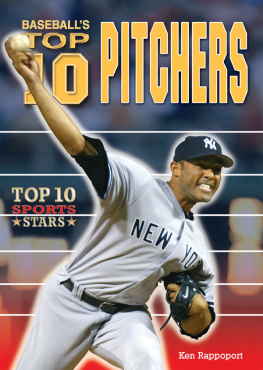Copyright 2014 by Rich Westcott
All rights reserved. No part of this book may be reproduced in any manner without the express written consent of the publisher, except in the case of brief excerpts in critical reviews or articles. All inquiries should be addressed to Sports Publishing, 307 West 36th Street, 11th Floor, New York, NY 10018.
Sports Publishing books may be purchased in bulk at special discounts for sales promotion, corporate gifts, fund-raising, or educational purposes. Special editions can also be created to specifications. For details, contact the Special Sales Department, Sports Publishing, 307 West 36th Street, 11th Floor, New York, NY 10018 or .
Sports Publishing is a registered trademark of Skyhorse Publishing, Inc., a Delaware corporation.
Visit our website at www.sportspubbooks.com.
10 9 8 7 6 5 4 3 2 1
Library of Congress Cataloging-in-Publication Data is available on file.
ISBN: 978-1-61321-651-4
eISBN: 978-1-61321-677-4
Printed in the United States of America
DEDICATION
To my loving wife Lois, for her constant companionship, encouragement, and help whenever needed. You are the beacon of my life and the reason I survive.
And
To all the pitchers who have ever gone to the mound and tried to get a batter out. As an old pitcher, I know firsthand how hard it is to perform that task.
ACKNOWLEDGMENTS
M any people have made substantial contributions to this book, and to them I would like to extend a special note of appreciation. In particular, I want to thank my friend Paul Hagen for writing the foreword. Tim Wiles and John Horne of the Baseball Hall of Fame in Cooperstown, NY have been especially helpful, as has baseball historian Bob Warrington. I also appreciate the tireless and extremely helpful work of editor Julie Ganz. And finally, a special thanks to Dick Allen, Harold Baines, George Brett, Jim Fregosi, Keith Hernandez, Wally Joyner, Mark McGwire, Lance Parrish, Ryne Sandberg, and Mike Schmidt for their insightful comments and expertise in helping me define some of the pitchers in this book who they played with or against.
FOREWORD
By Paul Hagen
W hen I moved from Texas to cover the Phillies in 1987, I had a lot to learn. How to pronounce Schuylkill ExpresswaySKOO-keland to avoid it at all costs during rush hour. Where the best cheesesteaks could be found. To make sure I had cash for the Walt Whitman Bridge coming to and from Veterans Stadium from Cherry Hill, where I lived at the time. Back then it was 90 cents, and you paid both coming and going; E-Z Pass wouldnt come along for a few more years.
It didnt take long, though, to figure out that one of the most reliable sources for information on the history of one of the National Leagues charter teams was Rich Westcott. He was a regular presence in the press box and always had a fascinating fact to share or a story to tell.
That was many books ago. During his career, Rich has produced nearly two dozen volumes, many of which have illuminated the adventures and misadventures of one of baseballs most interesting franchises. Great Stuff: Baseballs Most Amazing Pitching Feats expands his scope, but is just as insightful and compelling.
Its one thing to attempt to identify the 50 most impressive pitching feats of all time. Its another to present each with anecdotes and details that raise the discussion beyond a dry recitation of facts. Westcott succeeds in doing just that.
This book, then, is kind of like those car insurance commercials on television. Everybody knows that in 1938 Cincinnatis Johnny Vander Meer became the only pitcher to ever throw back-to-back no-hitters. But, did you know:
That he had pitched a three-hitter in his start before the first no-no and didnt allow a hit in the first 3 1/3 innings of the one after?
That he declined the Reds suggestion that he change his uniform number to 00 after completing his feat?
That he hurt his arm the following season but, 14 years later, pitching for Tulsa against Beaumont in a Texas League game, he hurled another no-hitter before an announced crowd of 335?
Everybody knows that Christy Mathewson pitched three shutouts for the New York Giants against the Philadelphia Athletics in the 1905 World Series. But did you know:
That he was nicknamed Big Six, possibly because thats what New Yorkers called the biggest, fastest fire engines? Westcott also unearthed a priceless, pithy quote from Mathewson summarizing his gameday approach. Anybodys best pitch is the one batters arent hitting that day.
Great Stuff is filled with interesting nuggets like that, making this a book that is both educational and entertaining. Along the way, we are introduced to many of the biggest names in baseball history. Walter Johnson, Greg Maddux, Babe Ruth, Bob Feller, Doc Gooden, Tom Seaver, Nolan Ryan, Sandy Koufax, Mariano Rivera, Bob Gibson, Steve Carlton, Cy Young, and Warren Spahn are all present and accounted for. But so are Fred Marberry, Lou Brissie, Leon Cadore, and Joe Oeschger. The latter are the stories that few people know and which demonstrate all over again what a maddeningly unpredictable game baseball can be.
And if that wasnt enough, Westcott ties it all up with a shorter list of 50 honorable mentions. Its almost impossible to imagine that there could be a more complete, detailed, and exhaustively researched list of the best pitching performances anywhere.
The presentation is sensibly broken into eras, and theres something in here for any baseball fanthe historian or the reader who enjoys the story behind the story, the old-timer or the youngster who is just discovering about the game. Theres plenty of great stuff in Great Stuff .
INTRODUCTION
I n all of sports, there is probably no position more difficult than that of the pitcher. A pitcher is more responsible for the outcome of a game than any other position player in team sports.
If a pitcher has a good game, his team often wins. If he does not, his team usually loses. To be successful, a pitcher must be at the top of his game. He not only has to be talented with the ability to throw good pitches with good command, but also he has to be knowledgeable, strong, tough, and smart. He must work hard, remain healthy, be able to deal with all kinds of different conditions, and stay focused on the job with a plan for approaching each hitter and each situation.
Quite obviously, it is no easy job being a pitcher. It is an even harder job being a good one. For those few who reach the highest level of their profession, the climb to the top is a magnificent achievement that is largely unparalleled in sports.
Sometimes, the pitchers who ascend to this level add special achievements to their glittering careers. It is these incredible feats performed by very special pitchers that form the content of this book.
During the long history of Major League Baseball, there have been many spectacular performances on the mound. Typically, these have been among the sports most noteworthy achievements.
Some of these achievements involved a performance in a single game. Some occurred during a series of games or over the course of an entire season. Others were special records posted along the way of ones career. Some were an accumulation of related accomplishments performed over an extended period. Still others involved non-pitching endeavors that had a powerful effect on a pitchers performance on the diamond.
These remarkable accomplishments are one of a kind. No one else had ever done them. And most likely, no one else ever will. In a few cases, the feats are the first of their kind. But each one stands alone as a singular achievement.

